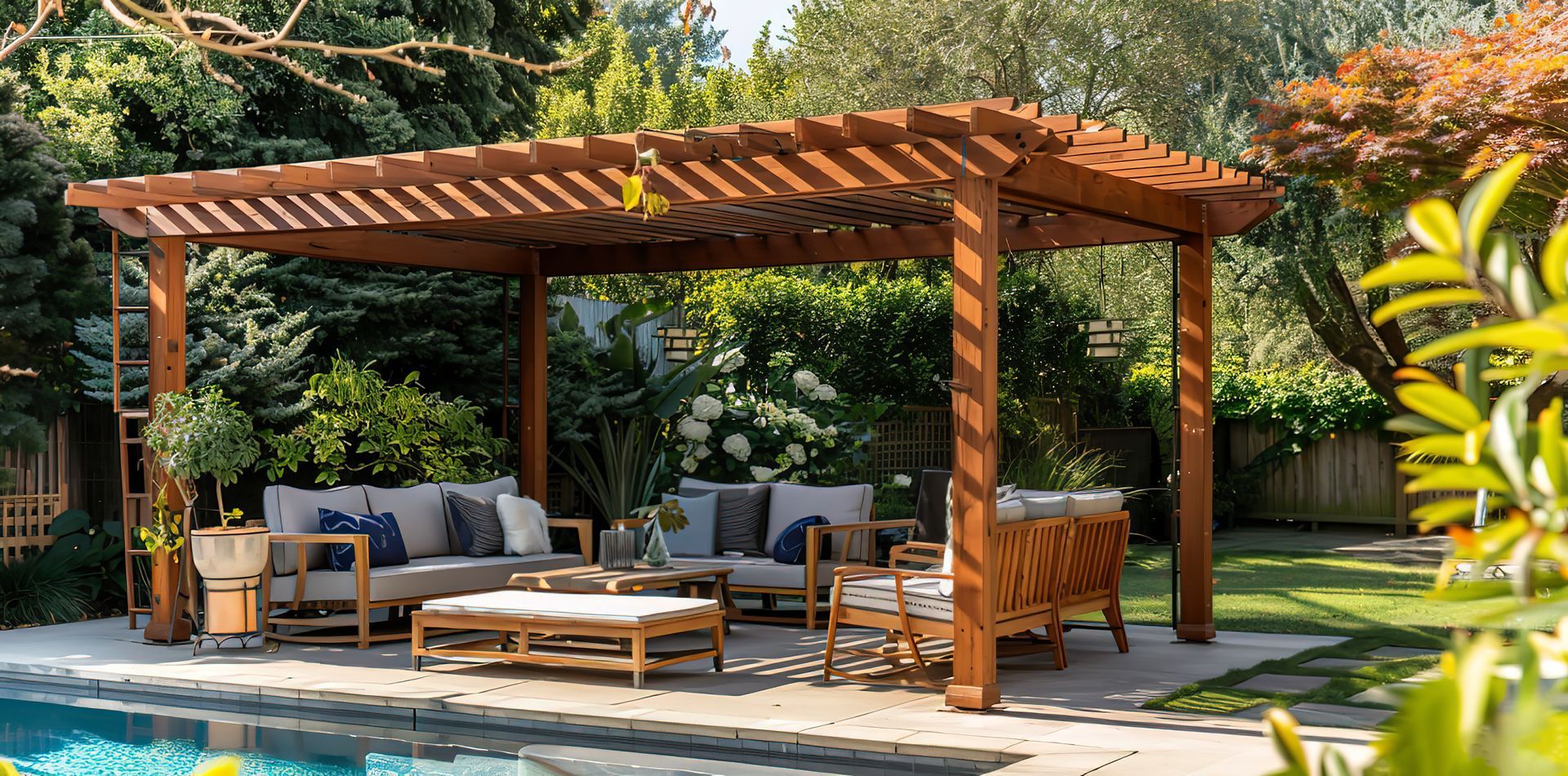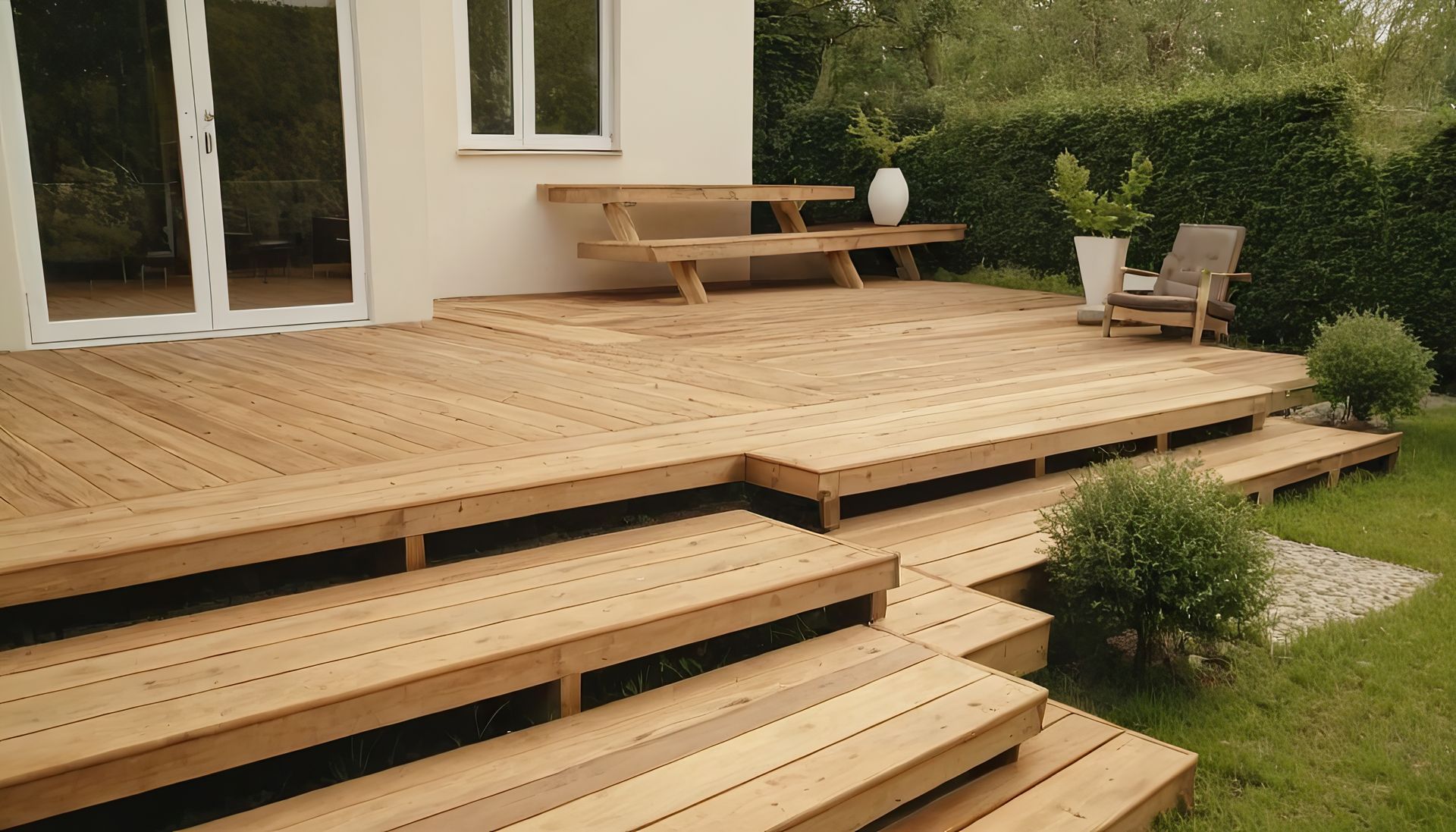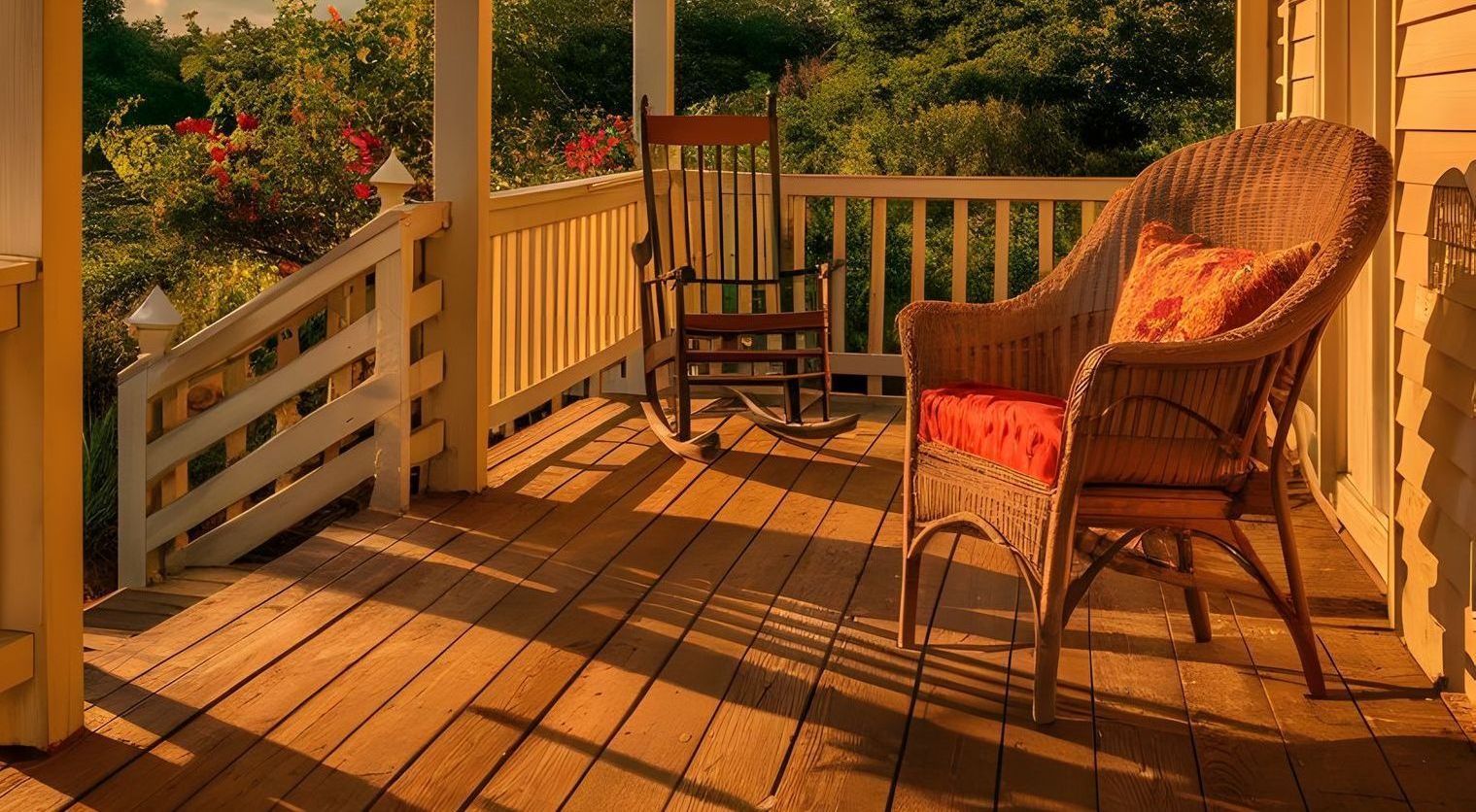Is Your Deck Safe? How to Spot and Fix Common Deck Safety Issues
Is Your Deck Safe? How to Spot and Fix Common Deck Safety Issues

Your deck is a valuable outdoor space, providing the perfect spot for relaxing, dining, and entertaining. However, over time, wear and tear can lead to potential safety hazards. Regularly checking your deck for safety issues is essential to protect both your home and your loved ones. Here's a guide to help you identify common deck safety issues and fix them before they become dangerous.
1. Loose or Wobbly Railings
One of the most common safety concerns with decks is loose or wobbly railings. Railings provide a crucial safety barrier, especially for children and pets, so it’s important to ensure they’re secure.
How to Spot the Issue:
Gently shake the railing to see if it moves or feels loose.
Check for any visible gaps or cracks in the posts or railing connections.
How to Fix It:
Tighten any loose screws or bolts in the railing system.
If the posts are damaged or rotted, you may need to replace them entirely.
2. Rotted or Weak Decking
Wooden decks are particularly prone to rot and decay, especially if they’re exposed to moisture or extreme weather conditions. Rotted wood can cause weak spots that might give way when stepped on.
How to Spot the Issue:
Look for dark spots or discoloration, which may indicate rot.
Press on the wood in various areas to see if it feels soft or spongy.
Check the edges of boards and around screws or nails for signs of water damage.
How to Fix It:
Replace any rotted or decayed boards with new, pressure-treated wood or composite decking.
Sand down rough or splintered areas to avoid injury.
3. Loose or Exposed Fasteners
Fasteners like screws, nails, and bolts are essential for keeping your deck together. Over time, they can work loose or become exposed, creating both structural issues and safety hazards.
How to Spot the Issue:
Look for screws or nails sticking out of deck boards.
Check the connections at the ends of the deck and railings to see if any fasteners are loose.
How to Fix It:
Re-secure any loose fasteners by tightening or replacing them.
Consider using deck screws instead of nails, as screws offer better holding power.
Use deck plugs to hide exposed screw heads for a smoother, safer surface.
4. Uneven or Sagging Deck Boards
A deck that has sagging or uneven boards can create tripping hazards. Over time, the weight of furniture, foot traffic, or moisture can cause certain areas of your deck to sink or slope.
How to Spot the Issue:
Stand at different points on your deck and check for areas that feel uneven or unstable.
Look for noticeable dips or bulges in the deck boards.
How to Fix It:
Inspect the deck's frame and support beams for signs of damage or sagging.
If necessary, replace or reinforce the support beams to ensure the deck is stable and level.
5. Worn or Slippery Deck Surface
A slippery deck surface is dangerous, especially when wet. A buildup of moss, algae, or mold can create a slick, hazardous surface, increasing the risk of slips and falls.
How to Spot the Issue:
Check for any slippery spots or areas with visible mold, algae, or mildew, particularly in shaded or damp areas.
How to Fix It:
Clean the deck regularly using a deck cleaner or a mixture of water and mild detergent to remove grime and slippery buildup.
For wooden decks, consider using a non-slip coating or stain that provides extra traction, especially in high-traffic areas.
6. Unsafe Stairs and Steps
Deck stairs can be one of the most vulnerable parts of your deck. Loose or damaged stairs can be hazardous, especially if they aren’t built to code.
How to Spot the Issue:
Look for any loose or missing steps.
Check the stair railings and risers to ensure they are properly attached.
Test the steps for sturdiness by applying pressure to them.
How to Fix It:
Tighten or replace loose stair treads and risers.
Ensure the stairs are securely attached to the deck and grounded properly.
Add or repair handrails for extra support and safety.
7. Structural Damage to the Support Posts
The support posts are what hold your deck up, so any damage to them can lead to severe stability issues. If support posts are compromised, the entire deck could be at risk of collapse.
How to Spot the Issue:
Look for cracks, splits, or signs of rot in the posts or beams.
Inspect the bottom of the posts where they meet the ground for signs of moisture damage.
How to Fix It:
If a post is damaged or rotted, it should be replaced immediately to avoid compromising the deck’s stability.
Reinforce posts and beams with additional supports if necessary.
8. Insufficient Drainage and Water Accumulation
Water that pools around or under the deck can cause significant structural damage over time. Poor drainage can lead to rotting wood, rusting fasteners, and the growth of mold and mildew.
How to Spot the Issue:
Check for any areas of standing water or puddles under the deck.
Look for signs of water damage on the underside of the deck, such as discoloration or mold growth.
How to Fix It:
Install proper drainage systems, like gravel or a French drain, around the deck to prevent water buildup.
Elevate the deck if necessary to allow for better airflow and drainage.
Conclusion
Deck safety is an essential part of home maintenance, and keeping your deck in good shape not only protects your investment but ensures the safety of everyone who uses it. Regularly inspecting your deck for these common safety issues, addressing problems early, and making necessary repairs can help prevent accidents and extend the life of your deck.
If you're not sure where to start or need professional assistance, Blue Ridge Deck Builders of Roanoke can help inspect, repair, and upgrade your deck to ensure it’s safe and secure for years to come. Contact us today to schedule an inspection or discuss your deck’s safety needs!






